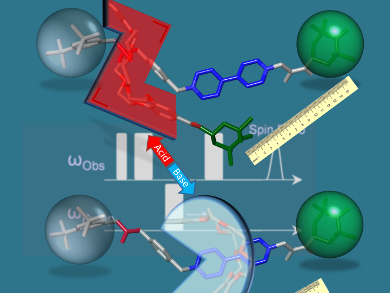Molecular machines have potential uses in communication and information technology. Understanding how they work on a molecular level is important to be able to design and synthesize machines with targeted functions. Due to the large number of degrees of freedom, structurally investigating such compounds using traditional methods poses problems. This is often done with X-ray crystallography or NMR spectroscopy, which have intrinsic limitations.
Alberto Credi and Marco Lucarini, University of Bologna, Italy, together with Marilena Di Valentin, University of Padova, Italy, and colleagues have used pulsed electron-electron double resonance (PELDOR) spectroscopy to gain insight in the structural changes that take place in a spin-labelled rotaxane. Rotaxanes are a family of often-studied molecular machines.
PELDOR spectroscopy is a powerful tool in investigating spin labels that are far beyond the reach of NMR spectroscopy. It has the advantage of being able to be used for solutions unlike X-ray crystallography. Being able to monitor spin-spin distances up to 100 nm, it allowed the team to look at the structural changes of the rotaxane upon chemical induction.
Using the PELDOR results, together with stochastic calculations for confirmation, the researchers found a change of the conformation of the rotaxane’s dibenzo[18]crown-6 ring during its pH-induced movement along the axle. They could show that such a combination of techniques can be used to successfully investigate large molecular motors, and provide results to help the design of such molecular machines.
- Structural Changes of a Doubly Spin-Labeled Chemically Driven Molecular Shuttle Probed by PELDOR Spectroscopy,
Paola Franchi, Valentina Bleve, Elisabetta Mezzina, Christian Schäfer, Giulio Ragazzon, Marco Albertini, Donatella Carbonera, Alberto Credi, Marilena Di Valentin, Marco Lucarini,
Chem. Eur. J. 2016, 22, 8745–8750.
DOI: 10.1002/chem.201601407




